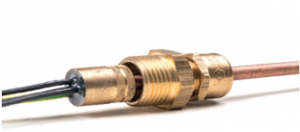
Fire Survival Cable- improved safety during fire emergencies
Generally, standard electrical cables are easily damaged and have not been designed specifically to stand firm in the case of fires, resulting in a drop
Call us
FROM OUR BLOG

Generally, standard electrical cables are easily damaged and have not been designed specifically to stand firm in the case of fires, resulting in a drop

View our slideshow below for a guide on Terminal Heads and Blocks. Pyrosales stock an extensive range of terminal heads and terminal blocks for temperature probes.

The base-metal thermocouple covers the majority of applications within industry over a range of -80°C to +1300°C. Type T Copper Constantan

Pyrosales have been producing temperature solutions for the Glass Industry for more than 20 years. Our products are constantly being updated to meet the challenging

The following guidelines, drawn from our many years’ experience of serving the glass and furnace industries, will help achieve the best performance from high temperature

Thermocouple Type E: Type E (Chromel®/Constantan) thermocouple is composed of a positive leg of Chromel® (nickel/10% chromium) and a negative leg of Constantan (nickel/45% copper). The

Thermocouple Type J: Type J (Iron–Constantan) is a common general purpose sensor as it is one of the most linear thermocouples. Type J thermocouples have an
Thermocouple Type K: Type K (Chromel®–Alumel®) is the most common general-purpose thermocouple. It is inexpensive, and a wide variety of probes are available in its −200 °C

Thermocouple Type N: Type N (Nicrosil/Nisil) thermocouple has a Nicrosil (nickel-14%, chromium-1.5%, and silicon) positive leg, and a Nisil (nickel- 4.5%, silicon-1%, and magnesium) negative leg.

Thermocouple Type R: Types R thermocouples, (Platinum vs. 13% Rhodium/Platinum), are usable up to 1480°C (2,700°F). They are extremely stable but reducing atmospheres are particularly damaging.
Copyright © 2022 Created by Pepper Digital
Disclaimer – Images for illustrative purposes only and may not be representative of the actual resolution of the camera shown.